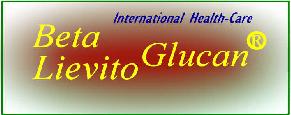 |
 |
 |
 |
 |
 |
 |
 |
 |
 |
 |
 |
 |
 |
 |
 |
 |
 |
 |
 |
 |
|
|
|
|
|
|
|
|
|
|
|
|
|
|
|
|
|
|
|
|
|
|
|
 |
|
|
|
|
|
|
|
|
|
|
|
|
|
|
|
|
|
|
|
|
|
|
|
|
|
|
|
|
|
|
|
|
Le
Béta Glucane dans l'Aviculture
Bibliographie:
"Blood cells and plasma proteins of chickens fed a diet supplemented with 1,3- 1,6 beta d Glucan and enrofloxacin"
Fleiscer LG, Gerber G, Liezenga RW, Lippert E, Scholl MA, Westphal G Arch Tierernahr. 2000;53(1):59-73
"Comparison of the supplemental effects of Saccharomyces cerevisiae and antibiotics in low protein and high fibre diets fed to broiler chickens."
Onifade AA, Odunsi AA, Babatunde Gm, Olorede BR, Muma E.
Arch Tierernahr, 1999; 52(1): 29-39
"Growth performance, carcass characteristics, organs, measurement and haematology of broiler chichens fed a high fibre diet supplemented with antibiotics or dried yeast"
Onifade AA. Nahrung 1997 41:: 370-374
|
|
|
|
|
|
|
|
|
 |
|
|
|
|
|
|
|
|
|
|
|
|
|
|
|
|
|
|
|
|
|
|
|
|
|
|
|
|
|
|
|
|
|
 |
|
|
|
|
|
|
|
|
|
|
|
|
|
|
|
|
|
|
|
|
|
|
|
|
|
|
Le
Béta Glucane dans Pisciculture
"The Use of immunostimulants to Increase Resistance of Aquatic Organisms to Microbial Infection". J. Dermatol. Surg. Oncol., 15:1199-1202; 1989.Raa, J., Roerstad, G., Engstad, R., Robertsen, B.:
"Beta(I-3)glucan-glucans as Immunostimulants in Fish".
Modulators of Fish Immune Responses, Vol. 1; 1994.Robertsen, B., Engstad, R. E., Jorgensen, J.B.:
"Yeast beta-glucan stimulates respiratory burst activity of Atlantic salmon (Salmo salar L.) macrophages," Dev. Comp. Immunol. 19:43-57; 1995 Jorgensen, J. B., Robertsen, B.:
Immunomodulation by dietary beta-1, 3-glucan in the brooders of the black tiger shrimp Penaeus monodon.
Fish Shellfish Immunol. 2000 Aug;10(6):505-14.
|
|
|
|
|
|
|
|
|
|
|
|
|
|
|
|
|
|
|
|
|
|
|
|
|
|
|
|
|
|
|
|
|
|
|
|
|
|
|
|
|
Le
Béta Glucane dans la diéte pour le sévrage
des cochons.
"Les
résultats indiquent que l'adjonction du Béta
Glucane à la diète standard en quantité
de 2 kg/t. ou quantité du 4 kg/t., porte à
une augmentation du poids moyenjournalierdans les premiéres
quatre semaines du' 11% (Groupe 2) au 13,8%
(Groupe 3) ; de la cinquiéme à la sixiéme
semaine on a une augmentation di poids moyen journalier du
6.47% (Groupe
2), jusqu'au
15,67%
(Goupe3).L'assomption
moyenne journalière d'aliment rapportée au gain
moyen journalier a jusqu'au
10% inféreur
(Tab.3). La
bibliographie et les études sur cochonsalimentés
au 0,025% de Béta Glucane, reférent de l'existence
d'une complexe interactions qui résultent dans un acroissement
et une résistance aux infections (Streptococcus Suis)".
Cliquez
ici pour prendre vision de la tabelle
|
|
|
|
|
|
|
|
|
|
|
|
|
|
|
|
|
|
|
|
|
|
 |
|
|
|
|
 |
|
|
|
|
|
|
|
|
|
|
|
|
|
|
|
|
Références
bibliographiqhiques :
"Influence of dietary beta-glucan on growth performance, non-specific immunity, and resistance to Streptococcus suis infection in weanling pigs".
Journal Animal Science Nov. 1995; 73 (11): 3341-50
Dritz Ss., Shi J., Kielian Tl, Goodband Rd, Nelssen JL, Tokach MD, Chengappa MM, Smith JE, Blecha F.
Department of Animal Sciences and Industry, Kansas State University Manhattan 66506-56022, USA.
"Effects of particulate Beta 1,3 glucan on human, rat,and guinea pig complement activity."
J Reticuloendothel Soc. May 1983; 33 (5) : 401-13.Glowski MM, Cortes-Haendchen L, Ghekiere L, Alenty A, Williams DL, Di Luzio R
|
|
|
|
|
|
|
|
|
|
|
|







